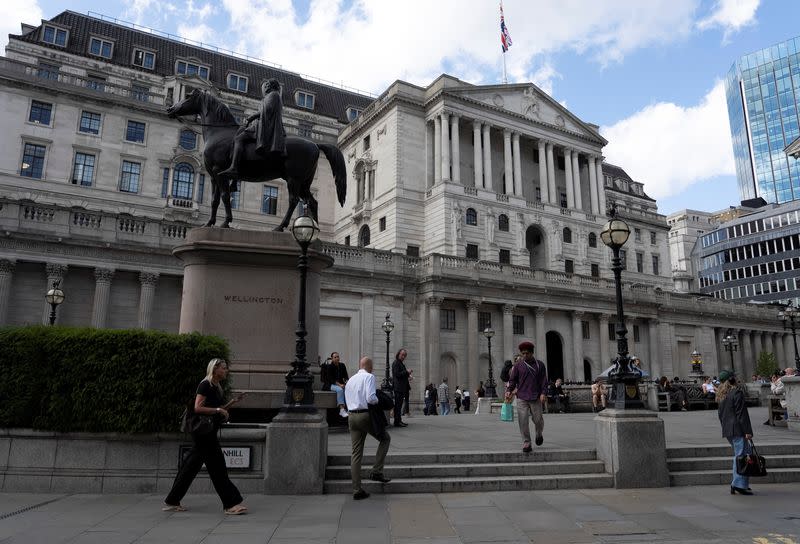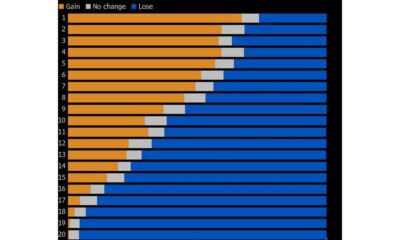Sports
Bank of England Lowers Capital Requirements for Midsize Banks

The Bank of England announced on March 5, 2024, a significant reduction in capital requirements for medium-sized banks, a decision aimed at revitalizing the UK financial sector. This adjustment comes as part of a broader reform strategy designed to enhance the stability and resilience of the banking system in the wake of previous economic crises.
Under the new regulations, the central bank has raised the minimum asset threshold at which banks are required to issue MREL—an acronym for Minimum Requirement for Own Funds and Eligible Liabilities. This move allows banks to be bailed in during financial distress, rather than relying on taxpayer-funded bailouts, a situation that was heavily criticized during the 2008 financial crisis.
Reforms to Enhance Financial Stability
These reforms signal the Bank of England’s commitment to ensuring that midsize banks are better equipped to manage financial challenges while maintaining a stable banking environment. By increasing the asset threshold, the central bank aims to reduce the burden on smaller institutions, allowing them to allocate resources more effectively.
The adjustment is expected to encourage lending and investment among midsize banks, which play a critical role in the UK economy. These institutions often serve small and medium enterprises that are vital for job creation and economic growth. The Bank of England’s decision reflects an understanding of the nuanced needs of this sector, particularly in a post-pandemic recovery landscape.
Impact on the Banking Sector
Analysts anticipate that easing capital requirements will bolster the competitiveness of mid-tier banks against larger institutions. By reducing the costs associated with capital compliance, these banks can offer more appealing rates to customers and potentially increase their market share.
This change follows a series of discussions and consultations within the financial community, where stakeholders highlighted the importance of a more tailored regulatory approach for midsize lenders. The Bank of England has positioned itself as responsive to these concerns, balancing regulatory oversight with the need for economic dynamism.
In the coming months, it will be crucial to monitor how these reforms affect lending practices and overall financial health in the UK. The Bank of England has indicated it will continue to evaluate the effectiveness of these changes and make further adjustments if necessary to ensure the stability of the banking system.
As the financial sector adapts to these new regulations, the emphasis remains on fostering a resilient economy capable of withstanding future shocks. The Bank of England’s proactive approach may serve as a model for other central banks considering similar reforms in their jurisdictions.
-

 Politics4 weeks ago
Politics4 weeks agoSecwepemc First Nation Seeks Aboriginal Title Over Kamloops Area
-

 World5 months ago
World5 months agoScientists Unearth Ancient Antarctic Ice to Unlock Climate Secrets
-

 Entertainment5 months ago
Entertainment5 months agoTrump and McCormick to Announce $70 Billion Energy Investments
-

 Science5 months ago
Science5 months agoFour Astronauts Return to Earth After International Space Station Mission
-

 Lifestyle5 months ago
Lifestyle5 months agoTransLink Launches Food Truck Program to Boost Revenue in Vancouver
-

 Technology3 months ago
Technology3 months agoApple Notes Enhances Functionality with Markdown Support in macOS 26
-

 Lifestyle3 months ago
Lifestyle3 months agoManitoba’s Burger Champion Shines Again Amid Dining Innovations
-

 Top Stories2 months ago
Top Stories2 months agoUrgent Update: Fatal Crash on Highway 99 Claims Life of Pitt Meadows Man
-

 Politics4 months ago
Politics4 months agoUkrainian Tennis Star Elina Svitolina Faces Death Threats Online
-

 Sports5 months ago
Sports5 months agoSearch Underway for Missing Hunter Amid Hokkaido Bear Emergency
-

 Politics5 months ago
Politics5 months agoCarney Engages First Nations Leaders at Development Law Summit
-

 Technology5 months ago
Technology5 months agoFrosthaven Launches Early Access on July 31, 2025





















